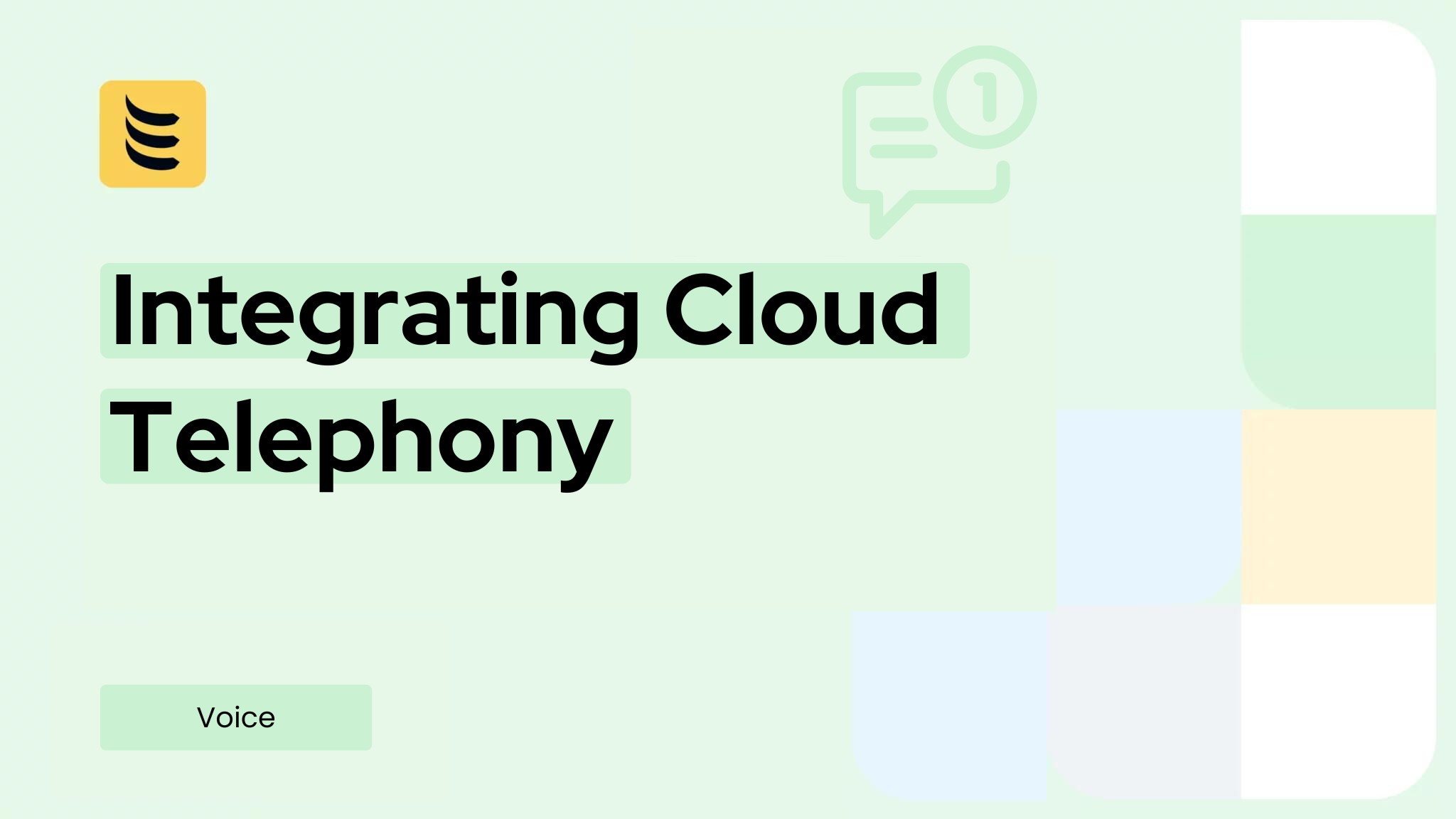Put simply, a communications-platform-as-a-service (CPaaS) is a cloud-based system that provides the backend infrastructure to a telecommunications system. Offering Voice, SMS and Phone numbers, CPaaS is provided to companies and software houses that want to develop their own front-end applications. However, CPaaS providers are increasingly adding on their own applications, thus offering a full suite of ready-to-go communications facilities.
Because the CPaaS concept is still in its infancy, it remains to be seen whether the popularity of the full service model with user apps included will be where the business goes or whether the providers will return to the focus on offering a barebones platform for others to build upon.
Applications That Use CPaaS
Hosted PABX systems, cellular networks, private video communications networks and integrated, hosted phone and data services all benefit from the use of a foundational CPaaS.
In practice, developers use the CPaaS as a library of functions that act as APIs through to the CPaaS utilities. This offers software houses a layer of abstraction, meaning that they don’t have to hire in telecommunication engineering skills in order to create communications software.
A specialized communications carrier like IDT Express is better positioned to secure connections and offer high quality transmissions as part of a CPaaS solution. In this way, software developers for end users don’t have to worry about cleaning out interference, eliminating jitter or dealing with packet loss and latency. CPaaS takes care of all of these issues and allows the company to focus their attention on their core product.
Benefits of the CPaaS Model
The provision of CPaaS systems expands the potential of telecommunications services. Creative and innovative developers might have steered clear of telecommunications development in the past because they lacked technical knowledge in the field. The removal of this barrier through CPaaS solutions should speed up the possibilities of convergence.
CPaaS will enable creators in fields such as entertainment, gaming, fintech and marketing to advance projects that blend video, voice, text, data analysis and interactive communications. Social media platforms will become much more feature-rich. The advent of 5G mobile networks will also advance live entertainment and virtual reality applications, creating immersive experiences for consumers all over the world.
The full potential of telecommunications that this service will unleash may be difficult to imagine, but it seems clear that CPaaS will alter the way we see the world.
CPaaS Trends
Coming back down to earth, let’s look at the current developments in the CPaaS field that are already in the pipeline.
The market intelligence service, IDC, forecasts that by 2022, CPaaS will be an industry sector worth almost $11 billion. This is a rapid growth from an estimated industry size of $2 billion in 2017. Keep in mind that these values refer to the turnover of businesses operating the communications platforms. The turnover of businesses that add value to those platforms with innovative applications is not included in the figures.
Augmented Reality and Virtual Reality
A very important area of growth that uses CPaaS as a springboard lies in virtual reality and augmented reality. You may think of VR as an entertainment medium; there is a lot of interest in CPaaS in that sector. However, the big growth area lies in services to industries that need to operate in hostile environments.
Deepsea mining is nearly impossible at the moment, but marine robotics married with remote controls informed by VR could make the exploration of minerals underwater a possibility. Think also of applications in space and of underground operations in impossible-to-reach crevices. If a miniature camera can reach a place, an operator can manipulate equipment within it through a VR system.
VR and remote systems, supported by CPaaS, could also make remote surgery possible. Imagine if very rare surgical skills could be made available closer to the patients that need urgent medical assistance, removing the dangers of transporting seriously ill people to the location of the specialist.
Education and Information
Historical sites, educational organizations, representative bodies and industry associations are also looking into how meetings, lectures and demonstrations can be organized and enhanced through virtual reality on CPaaS systems.
Data sharing and whiteboard notes can now be shared over the internet, thanks to high-speed broadband and stable connections. Yet, a combination of video, text, voice, graphics and live conferencing could still help to make education available to those who live in remote or insufficiently advanced areas. In this way, CPaaS could permit skilled knowledge leaders to share their expertise with pupils and trainees all over the world, simultaneously.
Corporate Collaboration

Another area ripe for expansion through CPaaS is corporate strategizing and product development.
Software businesses are accustomed to crowding development teams into one office building. However, in recent years, telecommuting has become more acceptable in the industry. The concept of a distributed team is only acceptable to project management, thanks to collaboration systems and high-quality video chat facilities.
Services such as Trello and Slack – which were almost unheard of a few years ago – are now helping teams collaborate, even if their group members are physically located thousands of miles apart. The virtual office and the virtual team are on course to become the standard working model in the future – and CPaaS can support these changes.
Other industries, such as media and entertainment, are also adapting to the distributed team concept. Software, entertainment, and media are usually early adopters of new technology and innovative working practices. As time progresses, larger, more traditional industries are likely to adopt telecommuting as a standard as well.
The heavy traffic, pollution and wasted time caused by centralizing the workforce in city center business districts could soon be a thing of the past, as CPaaS plays a role in shifting working practices and lifestyles.
Virtual Infrastructure
Just as companies are adapting to not having their staff in their offices, they are also quickly warming to the idea of not running their own servers onsite. The advent of AWS and Azure remote server services has now become mainstream.
Teams using cloud-based software and working from home need to be bound together through telecommunications. These working trends make CPaaS services more vital. Effectively, they’re the connective tissue in the body of remote and dispersed teams, working with cloud-based software on remote servers, but keeping in constant contact with each other.
Security Systems
Online services are increasingly using mobile applications to provide two-factor authentication in improved access controls. As more software services want to include interactive remote security measures in their access credentials, they are likely to rely more heavily on CPaaS providers. Over time, those access credentials may evolve to include retina scans, thumb prints and facial recognition – all of which may also affect physical access to facilities.
Crowd control measures for policing and inmate, patient, student and staff management also require immediate confirmation and surveillance footage delivery. All of these physical security measures can become more sophisticated thanks to IoT, supported by CPaaS.
Virtual Assistants and Chatbots
AI-driven virtual assistants are becoming increasingly common in the home and are also replacing many business-to-consumer interactions that used to be performed by humans. Drive-thru hosts in banks and fast food chains are being replaced by speaking computers, and Help Desks are filtering out common problems from reaching expert support technicians in order to reduce costs.
All of these person-to-computer communications create a greater volume of traffic on the internet that can be managed through a CPaaS to ensure continued quality of sound and constant availability without recourse to on-call telecommunication specialists.
The trend of replacing customer service operators with virtual assistants is likely to continue, affecting security guards, receptionists, medical practitioners and caregivers. CPaaS supports all of these advances in which the monitoring of service quality, the centralization of expertise and the confirmation of successful service delivery requires constant communications connections.
Innovative Marketing
However, CPaaS isn’t limited to internet and long-distance communication management. Personal area networks and line-of-site applications such as Bluetooth, proximity beacons and ultrasonic traffic can also be managed through a CPaaS. Short-distance communications technology is driving a revolution in location-specific services, which are – understandably – of particular interest to marketers.
Sports venues are now using beacons to direct audience participation activities at major stadium events. Main street stores are using proximity beacons to attract shoppers to special deals. Even store window displays can be adapted to attract specific targeted individuals as they pass. CPaaS can link short-distance gadgets and incentives to centralized market analysis specialists, enabling pitches to be adapted interactively.
CPaaS systems are also available to support marketing goals and product positioning, which can be evaluated instantly to enable data gatherers to spot new trends and suggest immediate refinements to marketing strategies.
Telecommunications Industry Realignment
Over recent years, big corporate players have been repositioning themselves to expand their services and take advantage of the opportunities presented by CPaaS. For example, the Spanish telecoms operator, Telefonica, bought the chat app Tokbox in 2012. Cisco Systems bought the CPaaS company, Tropo. And Vonage bought the SaaS support system, gUnify.
But new technology isn’t the exclusive realm of large corporations. Agile, disruptive startups can just as easily get to the forefront of a new technology without a lot of investment, thanks to CPaaS growth. Smaller enterprises that are already in the telecommunications industry are very well placed to add this new technology to their existing range of services.
Taking Advantage of CPaaS
The CPaaS provider sector is still very small. However, look into the concept and think about ways your organization could expand by adopting the technology. Imagine how different industries will soon need more connectivity, converged services and more accurate data gathering. Think of how many ways live, interactive video streaming can enhance existing business types and public services.
Tourism, education, health services, public transport, traffic systems, public lighting, home automation, entertainment, office services, engineering modelling, mining, aerospace, research, marketing, retail, wholesale, logistics, software development, fashion, music, news delivery, social media … the list of industries and activities that will soon be supported by CPaaS never ends.
There are even industries that have yet to be created by CPaaS, and so can’t yet be considered. Many businesses are thinking ahead to imagine new innovations that they won’t be able to implement without telecommunications. These innovators need CPaaS – even if they don’t realize that such a service exists.
Technological leaps need intermediaries to make them happen; people who understand technology, human interaction, marketing techniques and lateral thinking are rare. They stand at the intersection between technology and real life.
Just as people don’t usually realize what technology is available, technologists don’t realize what people need. Entrepreneurs in the telecommunications sector should be ready to bridge this comprehension gap. CPaaS is a new product being offered to the world, and a new sector will arise to provide the coordination between consumer and business needs with the potential of CPaaS.
At IDT Express, we’re closely watching the evolution of CPaaS, given the opportunities that exist to make our services more accessible through them. It’s an exciting time, and we invite you to monitor this growth along with us as new CPaaS applications arise each day.




